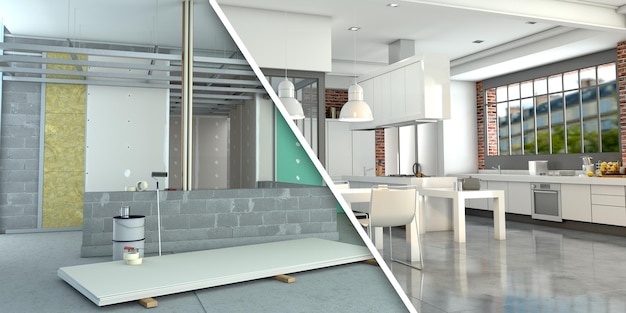Maximize Savings: Homeowner Tax Deductions You Can Claim in 2025

Anúncios
Don’t Leave Money on the Table: Claiming All Eligible Tax Deductions for Homeowners in 2025 is crucial for maximizing savings. Homeowners can reduce their tax liability by understanding and claiming deductions like mortgage interest, property taxes, and home improvement expenses. Staying informed ensures you leverage every available benefit.
Are you a homeowner looking to reduce your tax burden? Don’t Leave Money on the Table: Claiming All Eligible Tax Deductions for Homeowners in 2025 can significantly lower your tax liability. Let’s explore the deductions you should be aware of to make the most of your homeowner status.
Anúncios
Understanding Home Mortgage Interest Deduction
One of the most significant tax benefits for homeowners is the ability to deduct mortgage interest. This deduction can substantially reduce your taxable income, especially in the early years of your mortgage when interest payments are higher.
Eligibility for the Mortgage Interest Deduction
To be eligible for the mortgage interest deduction, you must itemize deductions on your tax return. If your total itemized deductions exceed the standard deduction for your filing status, it’s generally beneficial to itemize. The mortgage must be a secured debt on your home, meaning it’s used to buy, build, or substantially improve your home.
Anúncios
Limits on the Mortgage Interest Deduction
Prior to 2018, homeowners could deduct interest on mortgage debt up to $1 million. However, the Tax Cuts and Jobs Act of 2017 reduced this limit to $750,000 for mortgages taken out after December 15, 2017. If you took out your mortgage before this date, you may still be able to deduct interest on debt up to $1 million. Married couples filing separately have lower limits.
- Mortgage must be secured debt: The loan must be used to buy, build, or improve your home.
- Itemize deductions: You must itemize to claim the mortgage interest deduction.
- Debt limits: Be aware of the $750,000 or $1 million limits based on when you took out the mortgage.
Understanding these eligibility and limit factors will help you accurately calculate your mortgage interest deduction and ensure you’re not missing out on potential tax savings.

Property Tax Deduction: What You Need to Know
Property taxes are another key deduction for homeowners. These taxes, assessed by local governments, can be deducted from your federal income taxes, subject to certain limitations.
The State and Local Tax (SALT) Deduction
The Tax Cuts and Jobs Act of 2017 placed a limit on the amount of state and local taxes (SALT) that can be deducted. This limit includes property taxes, state income taxes, and local income taxes. As of 2025, the SALT deduction is capped at $10,000 per household.
Calculating Your Property Tax Deduction
To calculate your property tax deduction, add up all the property taxes you paid during the tax year. This includes property taxes on your primary home, as well as any vacation homes you own. If your total state and local taxes exceed $10,000, you can only deduct up to that amount. Keep detailed records of all property tax payments.
- SALT Cap: The maximum SALT deduction is $10,000 per household.
- Include all property taxes: Add property taxes from all owned properties.
- Keep records: Maintain accurate records of property tax payments.
By understanding the specifics of the property tax deduction and the SALT cap, you can ensure you’re taking full advantage of this tax benefit without exceeding the allowable limit.
Home Improvement Deductions: Boosting Your Tax Savings
While you can’t deduct the cost of regular home maintenance, certain home improvements may qualify for tax deductions. These improvements generally need to increase your home’s value, prolong its life, or adapt it to new uses.
Medical Home Improvements
If you make home improvements for medical reasons, you may be able to deduct these expenses. To qualify, the improvements must be medically necessary and prescribed by a doctor. Examples include installing ramps, widening doorways, or adding handrails. You can include the cost of these improvements as medical expenses, subject to the 7.5% adjusted gross income (AGI) threshold.
Energy-Efficient Home Improvements
The government offers tax credits for certain energy-efficient home improvements. These credits can help offset the cost of upgrades like solar panels, energy-efficient windows, and insulation. The specific credits and eligibility requirements can change, so it’s important to stay informed about current regulations.
Consider these popular energy-efficient upgrades:
- Solar panels: Installing solar panels can qualify you for a federal tax credit.
- Energy-efficient windows: Upgrading to energy-efficient windows can reduce energy consumption and potentially qualify for a tax credit.
- Insulation: Adding insulation can improve your home’s energy efficiency and may be eligible for a tax credit.
Understanding the nuances of deductible home improvements can lead to significant tax savings. Make sure to keep detailed records of all expenses and consult with a tax professional to ensure you’re claiming all eligible deductions.

Home Office Deduction: Claiming for Business Use
If you use a portion of your home exclusively and regularly for business, you may be able to deduct expenses related to that home office. This deduction is particularly relevant for self-employed individuals, freelancers, and small business owners.
Requirements for the Home Office Deduction
To qualify for the home office deduction, the space must be used exclusively and regularly for business purposes. This means it should be used only for business and on a consistent basis. The home office must also be your principal place of business or a place where you meet with clients or customers.
Calculating the Home Office Deduction
There are two methods for calculating the home office deduction: the simplified method and the regular method. The simplified method allows you to deduct $5 per square foot of your home office, up to a maximum of 300 square feet. The regular method involves calculating the actual expenses of your home office, such as mortgage interest, rent, utilities, and insurance, and deducting a portion of these expenses based on the percentage of your home used for business.
To maximize your home office deduction, consider:
- Exclusive Use: Ensure the space is used exclusively for business.
- Regular Use: Use the space consistently for business activities.
- Accurate Records: Maintain detailed records of all expenses related to your home office.
Properly claiming the home office deduction can significantly reduce your taxable income. Keep thorough records and consult with a tax advisor to ensure you meet all requirements and choose the most beneficial calculation method.
Tax Credits for First-Time Homebuyers
While deductions reduce your taxable income, tax credits directly reduce the amount of tax you owe. First-time homebuyers may be eligible for certain tax credits that can help offset the costs of purchasing a home.
Understanding First-Time Homebuyer Credits
A first-time homebuyer is typically defined as someone who has not owned a home in the past two years. Some states and local governments offer tax credits or other incentives to encourage homeownership among first-time buyers. These credits can help with down payments, closing costs, or other expenses.
State and Local Programs
The availability and specific details of first-time homebuyer credits vary by location. Some programs offer mortgage credit certificates, which allow you to claim a portion of your mortgage interest as a tax credit each year. Others provide grants or low-interest loans to help with the initial costs of buying a home.
When considering credits for first-time homebuyers, review:
- State Programs: Identify state-specific tax credits and incentives.
- Local Programs: Explore local government programs for first-time buyers.
- Eligibility Requirements: Understand the criteria to qualify.
By researching and taking advantage of these programs, first-time homebuyers can significantly reduce the financial burden of purchasing a home.
Strategies for Maximizing Homeowner Tax Deductions
To ensure you’re claiming all eligible tax deductions as a homeowner, it’s essential to stay organized, keep detailed records, and plan ahead.
Keep Detailed Records
Maintaining accurate and organized records of all home-related expenses is crucial for maximizing your tax deductions. This includes mortgage statements, property tax bills, receipts for home improvements, and any other relevant documentation. Use a spreadsheet or dedicated software to track your expenses throughout the year.
Plan Ahead
Tax planning should be an ongoing process, not just something you do at the end of the year. Regularly review your financial situation and make adjustments as needed. Consider consulting with a tax professional to develop a personalized tax strategy that takes into account your specific circumstances.
Ensure you have these items ready for tax season:
- Mortgage Statements: Keep track of your mortgage interest payments.
- Property Tax Bills: Maintain records of all property tax payments.
- Home Improvement Receipts: Save receipts for any qualifying home improvements.
By implementing these strategies, you can confidently navigate the complexities of homeowner tax deductions and maximize your savings. A proactive approach ensures you’re well-prepared to claim all eligible benefits each year.
| Key Point | Brief Description |
|---|---|
| 🏠 Mortgage Interest | Deduct interest paid on your mortgage, up to certain limits. |
| 💰 Property Taxes | Include property taxes in your SALT deduction, capped at $10,000. |
| 🛠️ Home Improvements | Deduct medical and energy-efficient home improvements. |
| 🏢 Home Office | Claim deductions for a home office used exclusively for business. |
Frequently Asked Questions (FAQ)
▼
The standard deduction varies based on filing status and is adjusted annually for inflation. Check the IRS guidelines for the most up-to-date amounts.
▼
Yes, mortgage insurance premiums may be deductible if you itemize deductions. There may be limitations based on your adjusted gross income (AGI).
▼
Medical home improvements are those made for medical reasons, like installing ramps or modifying bathrooms, when prescribed by a doctor.
▼
You can use either the simplified method, which is $5 per square foot, or the regular method, which involves calculating actual expenses.
▼
Check with your state and local government agencies, as well as the Department of Housing and Urban Development (HUD), for available programs.
Conclusion
Navigating the world of homeowner tax deductions can seem daunting, but with a clear understanding of the available benefits and a proactive approach to record-keeping and planning, you can significantly reduce your tax liability. Don’t Leave Money on the Table: Claiming All Eligible Tax Deductions for Homeowners in 2025 is within your reach, allowing you to make the most of your investment.





